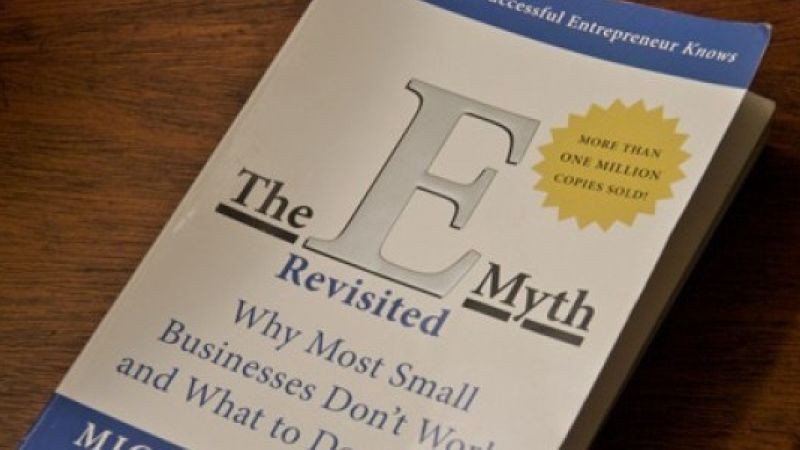The E-Myth Revisited:
Why Most Small Businesses Don’t Work and What to Do About It.
New York: Harper Collins, 1995
Review by John White
This book puts me in an unusual position. I often recommend books, but this time I am pushing Michael E. Gerber’s The E Myth Revisited as a must-read for all RAMP members. Here’s why: business management 101 is not usually part of Real Estate school. If real estate agents want to do well financially, they become business managers on their own initiative. They usually succeed only by going through the school of hard knocks or coaching (like NAEA).
Gerber looks at the process of growing a business, discussing personal problems to overcome along the way on the path to success. He starts with the idea that too often, people who are great at what they do (he calls them “technicians”), are not necessarily good at managing a business based on their talent: “To be a great Technician is simply insufficient to the task of building a great small business” (p. 39). The greatest problem, which Gerber lays out from the second chapter, is that each new business owner operates on conflicting impulses and inclinations. We are familiar with some of those opposing impulses:
* The part of us that likes to be sluggish and just enjoy – the hedonist
* The driven part of us, valuing self-discipline and organization
Anyone trying to start a new business is the entrepreneur (the seer of opportunity), the manager (the pragmatist), and the technician (the doer) – all in one person. These characters are generally in conflict with one another. Gerber shows how businesses grow out of this tension. The stages of business development are like infancy, adolescence, and maturity. The technician is not skilled at managing himself /herself, and therefore works too much and inefficiently. Think of how many real estate agents you’ve seen leave the industry after five years: nearly 87%, according to NAR. The demands of the business consume the technician, and finally, the business itself becomes the real boss. In the adolescent phase, the business owner reaches the point where it is necessary to hire some help. At this point, the owner deals with the difficulties of hiring the right personnel, and then training them to do the right work. Many fall into the trap of absentee management rather than productive delegation. The adolescent is still consumed by the business and the possibility of losing it (no pun intended!). Assuming the business owner survives the first two stages, the business owner becomes an entrepreneur only after seeing the business in its entirety, as a system which produces results for customers – or for real estate agents, for clients. Go read the book and build your business!
And tell us what you think!








